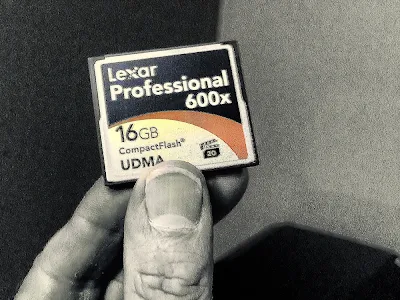Monday, December 16, 2013
Sunday, September 29, 2013
Blood In Water II
Testing 60fps on the Nikon D800. Music "A Dark Noise" by Nine Inch Nails. Made with two drops, one for the background and second for the main drop.
camera: Nikon D800
lens: AF Micro-Nikkor 105mm f/2.8D
light: L.E.D.
support: Gitzo Basalt with Acratech GP2
Saturday, September 14, 2013
Blood Drop In Water
Sunday, August 25, 2013
Blue Moon, August 20, 2013
The full moon that rose Tuesday, August 20, 2013 was not just a Blue Moon — it's also the Full Sturgeon Moon, the Full Red Moon, the Green Corn Moon and the Grain Moon. See the Space.com explanation of why this only full moon of August qualifies.
camera: Nikon D800
lens: AF Nikkor 180mm f/2.8 D
exposure: manual, ISO 500 @ f/8 @ 1/1000s
support: hand held
processing: moon and sky filter simulated in Nik Silver Efex Pro 2
Saturday, August 24, 2013
Twelve Camera Memory Card Care Tips
Date Your Memory Cards
Er ase Pictures by
Formatting the Card in the Camera
Don’t Completely Fill a Card
Switch Camera Off Before Inserting or Removing a Card
Rotate Your Cards
Avoid Static Charges When Handling Memory Cards
Avoid Environmental Extremes
Keep an Eye on the Camera Battery
Avoid Editing and Deleting Images with Your Camera
Perform Low Level Format Every 3-6 Months
Two Cards Are Better Than One
Watch for Firmware Updates
Thursday, May 23, 2013
Nikon Lens Autofocus Calibration

My setup for adjusting autofocus.
Nikon's How To Article describes using a book and ruler. I replace the book with a focus target. The ruler beside it is glued to a small carpenter's triangle to make it easy to stand up at 45 degrees.
On my D800, all six of my lenses needed between +5 and +12 adjustment.
Saturday, April 20, 2013
Review of Nikon AF-S 28mm f/1.8 G
- Auto Focus speed fairly good, similar to the Nikon AF-S 50mm f/1.4G
- The lens is very light weight
- Bokeh is very nice, especially for a wide angle lens.
- Compared to its f1.8 siblings, the build quality seems lower
- Crunchy or gritty feel when the lens is focused manually. This is an indicator of AF problems.
- Auto Focus sticks in one place. Every so often, three copies I tested would just not focus until I switched to manual mode, moved the focus collar a bit, then switched back to AF.
- One sample was just flat out, obviously fuzzy.
- Pronounced lateral chromatic aberration. Some samples were worse than others, but the quality was definitely poor. See the LCA comparison below.
- The Nikon gold lettering has a brassy orange matte look compared to any other Nikon lens I've seen.
- Extreme focus shift when stopping down. Some focus shift can be expected with a fast prime, but it is usually within the increased depth of field when stopped down. Some tests shooting a brick wall looked less sharp at f5.6 than f1.8 because the focus shifted so much beyond the wall.
Thursday, April 18, 2013
My Review of Nikon 28mm f/1.8G AF-S Nikkor Lens - Nikon U.S.A. Warranty
Originally submitted at Adorama
Nikon 28mm f/1.8G AF-S Nikkor Lens - 5 Year U.S.A. Warranty
Reasonably Sharp, Build Quality Suspect
Pros: Close Focus, Good contrast, Sharp, Light weight
Cons: Poor build quality, Slow auto focus
Best Uses: Video, Landscape/Scenery, Architecture, Indoors/Low Light
Describe Yourself: Pro Photographer
Was this a gift?: No
I returned four samples to Amazon before getting one from Adorama that I did not consider defective. Common issues I found are a gritty feel to the manual focus, pronounced chromatic aberration and poor sharpness. All the defective models a strange, tarnished orange look to the gold Nikon lettering on the lens, so maybe all came from a bad production run.
So one star off for poor construction that feels much cheaper than either the 85mm f1.8 or 50mm f1.8 and led to evident quality control problems. Another star off because it costs $200 more than it should, given the quality. Rather than being excited by my new lens, I feel like I'm settling for an inferior product.
I'd recommend this lens with some reservations. Be sure to test it thoroughly.
(legalese)
Friday, March 29, 2013
Alison Jo Makeup Artistry Video
Editing
I had been using Avid Studio, but it crashes under Windows 8. There is now no mention of Avid Studio on the Avid.com support site, so I scrambled for alternatives. The workflow for this video turned out to:
- Organize, trim and color correct clips in Lightroom 4, then export to a working folder.
- Assemble the music and clips in Photoshop CS6 and exported to a full HD file. This approach is actually effective and straightforward, delivering a fairly polished rough cut.
- End titles added with Cyberlink PowerDirector Ultimate 11. The interface is similar to Avid, but it is stable and much faster.
- Cyberlink uploaded the web optimized video to Vimeo and YouTube.
Technical
Cameras: Nikon D4 and Nikon D800
Lighting: Lowell Tungsten and Broncolor modeling lights
Support: Acratech Video Adapter, Opteka Shoulder Stock, Miller Fluid head.
Moon Rise with Poplars
It is great to have the time to grab a few shots again. This a view from our bedroom, March 27, 2013. This picture is the result of three hand held 1-stop bracketed shots processed in Nik HDR Efex 2, with minor touch up and cropping in Photoshop CS6.
New to OnOne Perfect Suite 7 is Perfect B&W. This picture was made the Albumen Print preset, after which I applied a sepia/blue split tone in Photoshop CS6. I'm fascinated by the look of early photographic processes and it is nice to have tools that support exploring them easily.
Technical
Camera: Nikon D800
Lens: AF Nikkor 180mm f/2.8D IF-ED
Exposure: Three 1-stop brackets around f/2.8 @ 1/15s @ ISO 1600
Support: Handheld
Software: DxO Optics Pro, Lightroom 4, Photoshop CS6, Nik HDR Efex, Perfect B&W
Saturday, January 26, 2013
Tree of Influences Redux
 |
| Irving Penn, 1949 |
 |
| Irving Penn's Tree of Influence A Notebook At Random, |
Monday, January 21, 2013
Mimi With Gold Walther PPK, 2012
It looks like the entire content of this blog was lost I changed the title, so I guess this is reboot for 2013. What better way to start fresh that with an image from the "Femme Fatale" project? Thank you to my collaborators, the marvelous model Mimi Graczyk, hair by Kris Theohar, makeup by Christoper McKinney and photo styling by Susan Page. I hope to pick up the pace on this and other art projects this year.
Workflow
This workflow has become pretty much my standard for fashion and beauty work:
- Capture tethered to a laptop using Nikon Camera Control Pro 2 and ViewNX 2
- At the end of the day, import pictures to a new Lightroom catalog for tagging and sorting
- Process the RAW picks in DxO Optics Pro 8, output as DNG files and import to Lightroom
- From Lightroom, run through basic beauty and fashion retouching in Photoshop CS6
- Apply a standard "look" using a custom recipe in Nik Color Efex Pro 4, which for me usually involves application of tone and contrast filters.
- Finish in Lightroom with a develop preset to complete the look. For this series, I'm using a split tone with a sepia wash and blue shadows.
camera: Nikon D800
lens: AF Micro-Nikkor 105mm f/2.8D
exposure: ISO 800 @ f/25 @ 1/80s
lighting: vintage Broncolor beauty dish
Links
Preston Page Studio
PrestonPage.com











